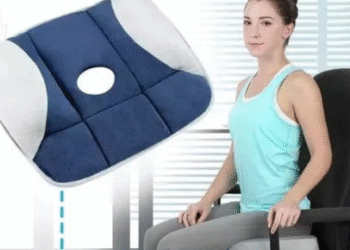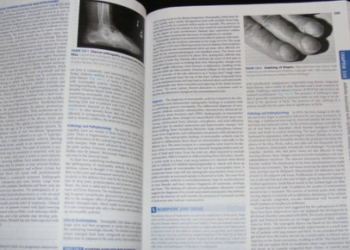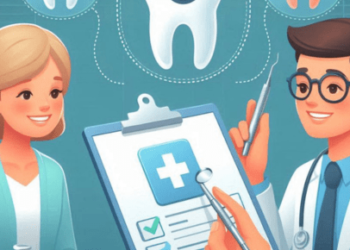1. Introduction to Hyperbaric Oxygen Therapy
Hyperbaric Oxygen Therapy (HBOT) involves breathing pure oxygen in a pressurized chamber. This treatment enhances the amount of oxygen in the blood, promoting healing and fighting infection. HBOT is used for a variety of medical conditions, offering significant therapeutic benefits.
2. The Mechanism of Hyperbaric Oxygen Therapy
HBOT works by increasing atmospheric pressure, which allows the lungs to take in more oxygen than usual. This elevated oxygen level helps tissues heal faster, reduces inflammation, and combats certain types of bacteria, making it a valuable treatment option.
3. Chronic Non-Healing Wounds
One of the primary indications for HBOT is the treatment of chronic non-healing wounds. Diabetic foot ulcers, pressure sores, and venous ulcers are conditions that often respond well to HBOT, as the increased oxygen supply promotes tissue repair and healing.
4. Radiation Injury Treatment
Radiation injuries, such as those resulting from cancer treatments, can cause severe tissue damage. HBOT is effective in treating radiation-induced tissue damage by enhancing blood flow and oxygen delivery to the affected areas, promoting recovery and reducing symptoms.
5. Diabetic Foot Ulcers
Diabetic foot ulcers are a common complication of diabetes. HBOT is indicated for these ulcers because it improves oxygenation of the blood and tissues, speeds up healing, and helps prevent infections, which are common in diabetic patients.
6. Carbon Monoxide Poisoning
HBOT is a well-established treatment for carbon monoxide poisoning. The therapy quickly removes carbon monoxide from the blood and restores normal oxygen levels, preventing damage to vital organs and tissues and improving patient outcomes.
7. Decompression Sickness in Divers
Decompression sickness, also known as “the bends,” occurs in divers who ascend too quickly. HBOT is the standard treatment for this condition, as it reduces nitrogen bubbles in the bloodstream and alleviates symptoms such as joint pain and dizziness.
8. Severe Anemia
In cases of severe anemia where blood transfusions are not possible, HBOT can be used as a temporary measure to increase oxygen levels in the blood. This helps maintain oxygen delivery to vital organs and tissues until the underlying cause of anemia can be addressed.
9. Crush Injuries and Compartment Syndrome
HBOT is beneficial for treating crush injuries and compartment syndrome. The therapy reduces swelling, improves oxygenation, and promotes healing of the damaged tissues, which can be crucial for preventing complications and improving recovery.
10. Skin Grafts and Flaps
For patients undergoing skin grafts or flap surgeries, HBOT can enhance the survival of these tissues. By increasing oxygen delivery, HBOT helps the grafts or flaps integrate with surrounding tissues more effectively, reducing the risk of failure.
11. Osteomyelitis (Bone Infection)
Chronic osteomyelitis, or bone infection, is another condition that can benefit from HBOT. The therapy enhances the effectiveness of antibiotics, promotes healing, and helps control infection by increasing oxygen concentration in the infected bone.
12. Soft Tissue Infections
HBOT is indicated for treating severe soft tissue infections, including necrotizing fasciitis and gas gangrene. The increased oxygen levels help kill bacteria, reduce swelling, and promote healing, making it an essential part of the treatment regimen.
13. Thermal Burns
HBOT is effective in treating thermal burns by reducing swelling, preventing infection, and promoting healing. The therapy enhances oxygen delivery to the damaged tissues, accelerating recovery and improving overall outcomes for burn patients.
14. Intracranial Abscess
For patients with intracranial abscesses, HBOT can be a valuable adjunct therapy. By increasing oxygen levels, HBOT enhances the effectiveness of antibiotics and helps reduce the size of the abscess, improving neurological function and outcomes.
15. Sudden Sensorineural Hearing Loss
Sudden sensorineural hearing loss (SSNHL) is an emergency that can benefit from HBOT. The therapy helps reduce inflammation and improve oxygenation of the inner ear structures, potentially restoring hearing or preventing further loss.
16. Compromised Skin Grafts
When skin grafts become compromised, HBOT can help salvage the tissue. The increased oxygen levels promote healing and integration with the surrounding tissue, reducing the risk of graft failure and improving patient outcomes.
17. Frostbite
HBOT is used to treat frostbite by reducing tissue damage and promoting healing. The therapy improves blood flow and oxygen delivery to the affected areas, helping to save tissue and prevent long-term complications.
18. Arterial Insufficiencies
Conditions like peripheral arterial disease, where blood flow is restricted, can be treated with HBOT. The therapy improves oxygen delivery to the affected limbs, promoting healing and reducing the risk of ulcers and other complications.
19. Cyanide Poisoning
In cases of cyanide poisoning, HBOT is an effective treatment. The therapy increases oxygen levels in the blood, helping to neutralize the effects of cyanide and prevent damage to vital organs.
20. Traumatic Brain Injury
HBOT can be beneficial for patients with traumatic brain injury (TBI). The therapy reduces swelling, improves oxygenation of brain tissue, and promotes healing, potentially improving neurological outcomes and recovery times.
21. Multiple Sclerosis
While still under investigation, HBOT shows promise as a treatment for multiple sclerosis (MS). The therapy may help reduce inflammation and improve oxygen delivery to the brain, potentially alleviating symptoms and slowing disease progression.
22. Post-Surgical Recovery
HBOT can enhance post-surgical recovery by reducing swelling, promoting healing, and preventing infection. Patients undergoing major surgeries may benefit from HBOT as part of their postoperative care plan.
23. Lyme Disease
Some studies suggest that HBOT may help treat Lyme disease by enhancing the effectiveness of antibiotics and promoting healing. The therapy may alleviate symptoms and improve overall health outcomes for patients with this condition.
24. Autism Spectrum Disorders
HBOT is being explored as a treatment for autism spectrum disorders (ASD). While research is ongoing, some parents and practitioners report improvements in behavior, communication, and overall functioning following HBOT.
25. Sports Injuries
Athletes recovering from sports injuries may benefit from HBOT. The therapy promotes faster healing, reduces inflammation, and helps restore function, making it a valuable tool for enhancing recovery and performance.
By understanding the various indications for hyperbaric oxygen therapy, patients and healthcare providers can make informed decisions about its use in treating a wide range of medical conditions.













